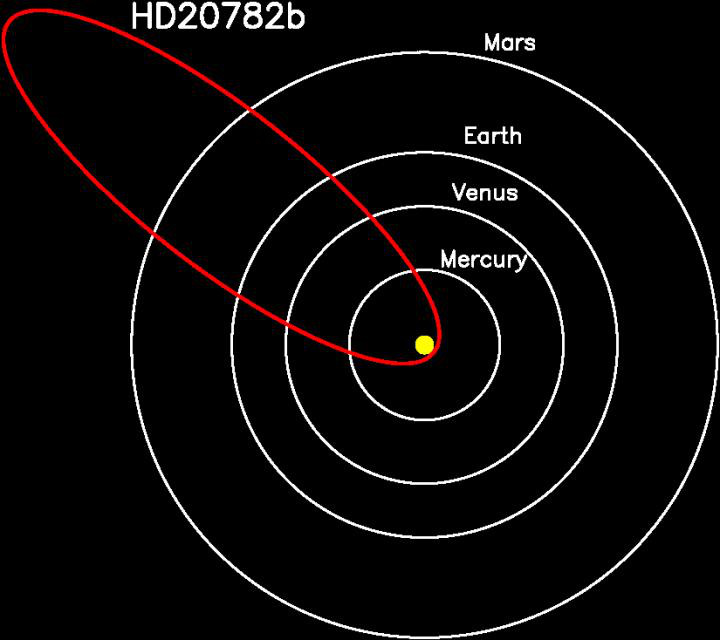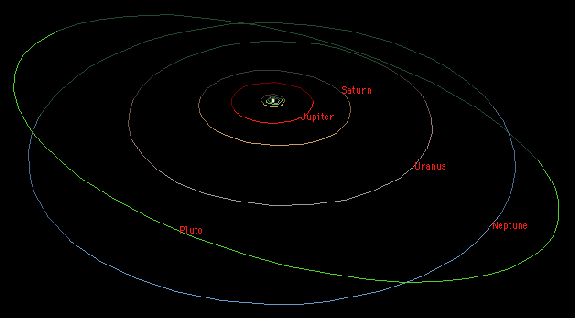Have you ever stopped to think about the shape of a planet’s path around the Sun? We often picture orbits as perfect circles, but the reality is far more dynamic and intriguing. It turns out, not all planets follow such a predictable, circular journey. Some, like our own Earth, have orbits that are slightly elliptical, meaning they’re more oval-shaped than circular. But which planet in our solar system boasts the most elongated, non-circular orbit?

Image: astronomynow.com
Understanding the shape of a planet’s orbit is essential for comprehending its climate, seasons, and even the possibility of life. By delving into the fascinating world of planetary orbits, we can gain insights into the intricate mechanics of our solar system and appreciate the beauty of the cosmos.
The Fundamentals of Orbit: A Journey Beyond Circles
The Dance of Gravity
To understand why orbits aren’t perfectly circular, we need to delve into the fundamental force governing their motion: gravity. Gravity is a force of attraction between any two objects with mass. The more massive the objects, the stronger the gravitational pull. In our solar system, the Sun is the most massive object, holding a powerful gravitational grip over the planets orbiting it.
From Circles to Ellipses
When a planet orbits the Sun, it’s not simply falling directly towards it. Instead, it’s constantly moving forward, creating a balance between its forward momentum and the Sun’s gravitational pull. While a perfectly circular orbit requires constant speed, the planets’ speeds are not constant. A planet’s speed is highest when it’s closest to the Sun and slowest when it’s farthest.
This interplay between momentum and gravity leads to a slightly elliptical, oval-shaped orbit. The “squishiness” of this ellipse is measured by a value called eccentricity. A circle has an eccentricity of 0. Higher eccentricity means that the orbit is more elongated. For example, an eccentricity of 0.9 is much more elongated than an eccentricity of 0.1.

Image: www.qrg.northwestern.edu
The Most Elliptical Orbit: Mercury’s Wobbling Path
While all planets in our solar system have orbits that are slightly elliptical, the champion of eccentricity is Mercury, the innermost planet. With an eccentricity of about 0.206, Mercury’s orbit deviates significantly from a perfect circle.
This elliptical path causes Mercury’s distance from the Sun to vary considerably throughout its year. When Mercury is at its closest point to the Sun, called perihelion, it’s only 46 million kilometers away. At its farthest point, known as aphelion, it’s a whopping 70 million kilometers away from the Sun! This drastic variation in distance directly affects the planet’s temperature and environment.
Imagine standing on Mercury’s surface. As you journey closer to the Sun during its perihelion, it would feel like you’re stepping onto a scorching hot stove! Then, as you travel further out to aphelion, the temperature might drop significantly, leading to a dramatic shift in the planet’s overall temperature.
A Peek into Mercury’s Eccentricity: A Glimpse into the Past
Why does Mercury have such a peculiar orbit? Scientists believe that the gravitational interactions with other planets, mainly Jupiter and Venus, have played a significant role in shaping Mercury’s orbit over time. Jupiter, the largest planet in our solar system, exerts a strong gravitational influence on the inner planets.
Early in our solar system’s history, these interactions could have caused Mercury’s orbit to twist, stretching its path into its current elongated shape.
The Implications of Eccentricity: Beyond Stellar Dance
Mercury’s eccentric orbit isn’t just a curious oddity in our solar system. It has implications for our understanding of planetary evolution, habitability, and even the search for extraterrestrial life. The varying distance from the Sun influences a planet’s temperature, surface conditions, and the possibility of liquid water, a key ingredient for life as we know it.
Scientists are currently researching how eccentric orbits might affect the presence of atmospheres on planets, the potential for the formation of moons, and the feasibility of water being present in a liquid state.
Beyond our Solar System: A Universe of Eccentricity
While Mercury earns the title of “most eccentric” within our solar system, astronomers have discovered planets in distant star systems with even more extreme elliptical paths. These “eccentric planets” can have orbits with incredibly high eccentricities, sometimes even exceeding values of 0.9! This means that these planets can experience enormous variations in their distance from their stars, resulting in wildly fluctuating temperatures and potentially extreme environments.
The existence of such eccentric planets challenges our existing models for planet formation and helps us expand our knowledge of the incredible diversity within the universe.
Which Planets Orbit Looks The Least Like A Circle
Conclusion: A Journey Through Planetary Paths
Learning about the orbits of planets, particularly those with eccentric paths like Mercury’s, reminds us that our solar system is a dynamic and ever-changing place. It also fuels our curiosity and drives us to explore distant star systems, seeking answers to the mysteries that surround us. As we uncover further details about these eccentric orbits, we gain a deeper understanding of the workings of the universe.
So next time you gaze up at the night sky, remember that the planets you see aren’t traveling in perfect circles. They’re engaged in a dynamic ballet, led by gravity’s invisible hand, on journeys that are sometimes more elliptical than circular. And in the ever-expanding universe, there’s still much to be discovered about the fascinating eccentricities of planetary orbits.






